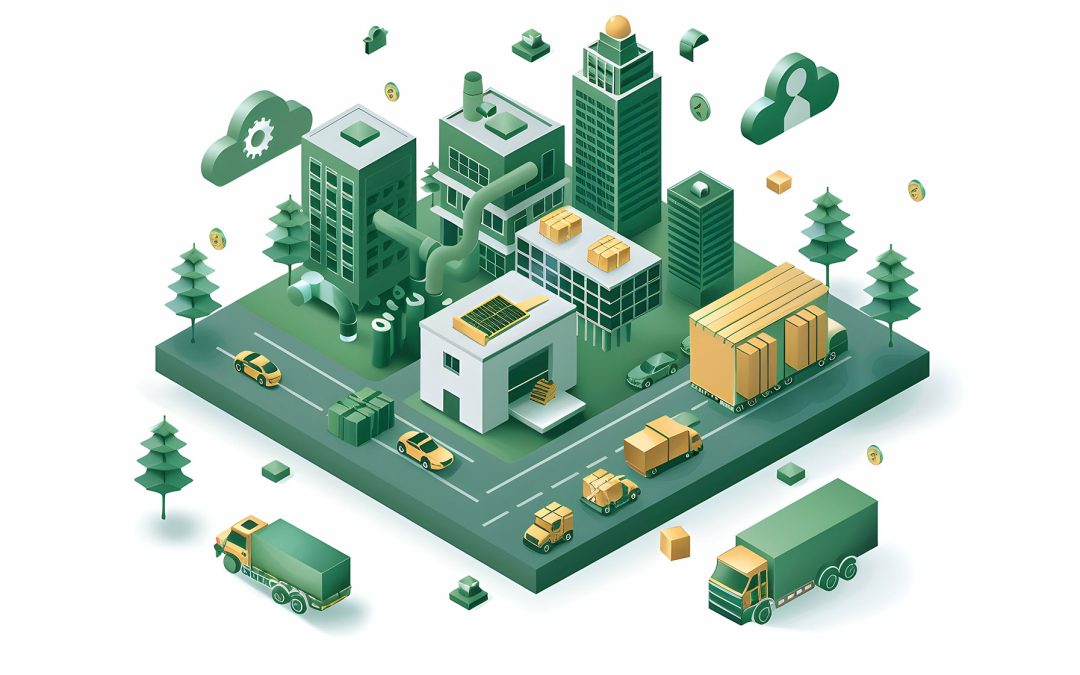In today’s fast-paced world, the traditional model of supply chain management is undergoing a profound transformation. As industries grapple with mounting environmental concerns, unpredictable disruptions, and shifting consumer demands, there is a growing push towards supply chains that are not only more agile but also greener. Let’s explore how supply chains are evolving to meet these new challenges and what this means for the future.
The Green Revolution in Supply Chains
Environmental sustainability has become a pivotal focus for businesses across the globe. With climate change and resource depletion becoming increasingly urgent issues, companies are rethinking their supply chain practices reducing their carbon footprint and promote environmental stewardship.
Sustainable Sourcing: Many organizations are now prioritizing sustainable sourcing practices. This means selecting suppliers who adhere to environmental standards and practices. For example, companies are seeking out raw materials that are renewable or recycled, and they’re working with suppliers who use energy-efficient processes.
Circular Economy: The concept of a circular economy, where waste is minimized and materials are continuously reused, is gaining traction. Supply chains are being redesigned to support recycling, refurbishment, and reuse. For instance, some companies are implementing take-back programs to reclaim products at the end of their lifecycle, reducing waste and creating new opportunities for material recovery.
Green Logistics: Transportation is a major contributor to greenhouse gas emissions. To mitigate this, supply chains are incorporating greener logistics practices. This includes optimizing delivery routes to reduce fuel consumption, investing in electric or hybrid vehicles, and exploring alternative modes of transport like rail or shipping.
Energy Efficiency: Supply chains are focusing on energy-efficient practices within their operations. This includes upgrading to energy-efficient machinery, investing in renewable energy sources, and implementing energy management systems to monitor and reduce consumption.
Agility in a World of Uncertainty
The COVID-19 pandemic highlighted the vulnerabilities in global supply chains, leading to significant disruptions. In response, there’s been a shift towards creating more agile and resilient supply chains that can quickly adapt to changing circumstances.
Diversification of Suppliers: Relying on a single supplier or region can lead to vulnerabilities. To address this, companies are diversifying their supplier base to include multiple sources from different geographic locations. This reduces the risk of disruptions and enhances flexibility.
Technology Integration: Advanced technologies like artificial intelligence (AI), machine learning, and the Internet of Things (IoT) are revolutionizing supply chain management. These technologies enable real-time tracking, predictive analytics, and automated decision-making, allowing supply chains to respond more swiftly to changes and disruptions.
Demand Forecasting: Improved forecasting techniques help companies better anticipate and respond to fluctuations in demand. By leveraging data analytics, businesses can make more accurate predictions and adjust their inventory and production schedules accordingly.
Flexible Manufacturing: The rise of flexible manufacturing systems allows companies to quickly reconfigure production lines to accommodate changes in demand or product specifications. This adaptability is crucial in a rapidly changing market environment.
Collaboration and Transparency: Building stronger relationships with suppliers and increasing transparency across the supply chain can enhance resilience. Collaborative planning and open communication help identify potential issues early and coordinate responses more effectively.
Looking Ahead
As supply chains continue to evolve, the focus on sustainability and agility will become even more pronounced. Companies that embrace these changes are likely to gain a competitive edge by not only meeting regulatory and consumer demands but also by driving innovation and efficiency.
The journey towards greener and more agile supply chains is ongoing, and it requires commitment and collaboration across the entire value chain. However, the benefits—ranging from reduced environmental impact to enhanced operational flexibility—make it a worthwhile endeavor.
In the end, a greener, more agile supply chain isn’t just about responding to current challenges; it’s about positioning for future success in a world that increasingly values sustainability and resilience.

